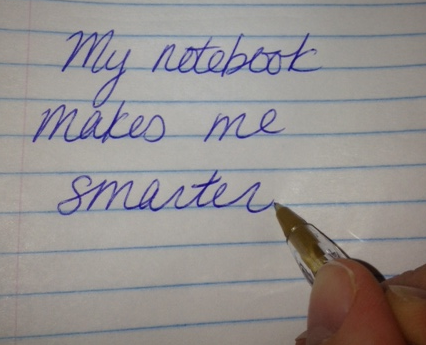 I love technology. You rarely see me out without BOTH my iPad and my iPhone. But that being said, if you saw me at a conference, taking a course, interviewing someone or planning out a strategy, you would see me with a pen and paper.
I love technology. You rarely see me out without BOTH my iPad and my iPhone. But that being said, if you saw me at a conference, taking a course, interviewing someone or planning out a strategy, you would see me with a pen and paper.
I’ve long thought that my brain processes what I write by hand much better than what I type. I believe it’s a combination of using a different part of my brain and writing more slowly, thereby having time to really digest the words. I can type faster than I can process.
I did a little research googling and found studies to support this theory. It seems I may be right, writing things out by hand can really make a difference! (note: I can’t use a stylus on my tablet to solve this problem because the lack of sensory feedback from the pen on the paper bothers me - I’m difficult like that.)
Take out a notebook
Here is my challenge to you. Take out a pen and a notebook and start writing by hand if:
- You need to do some planning;
- You have writer’s block;
- You’re interviewing someone for an article;
- You’re watching a webinar;
- You’re writing anything at all really, just give it a shot.
Pay attention. Did it feel different? Did thoughts start coming to you in ways they don’t when you’re typing?
Leave me a comment and tell me when the last time you took notes by hand instead of on a device of some kind. Do you find it make a difference the way I do?




